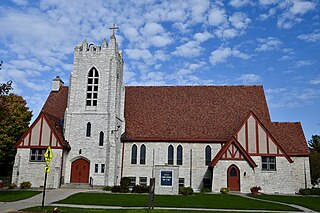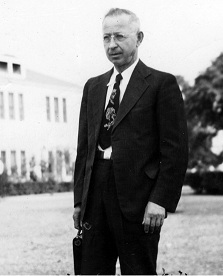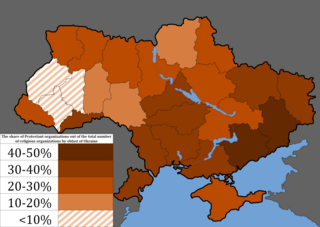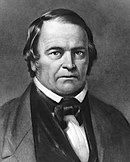Adventism is a branch of Protestant Christianity that believes in the imminent Second Coming of Jesus Christ. It originated in the 1830s in the United States during the Second Great Awakening when Baptist preacher William Miller first publicly shared his belief that the Second Coming would occur at some point between 1843 and 1844. His followers became known as Millerites. After Miller's prophecies failed, the Millerite movement split up and was continued by a number of groups that held different doctrines from one another. These groups, stemming from a common Millerite ancestor, collectively became known as the Adventist movement.

The Seventh-day Adventist Church (SDA) is an Adventist Protestant Christian denomination which is distinguished by its observance of Saturday, the seventh day of the week in the Christian (Gregorian) and the Hebrew calendar, as the Sabbath, its emphasis on the imminent Second Coming (advent) of Jesus Christ, and its annihilationist soteriology. The denomination grew out of the Millerite movement in the United States during the mid-19th century and it was formally established in 1863. Among its co-founders was Ellen G. White, whose extensive writings are still held in high regard by the church.

Seventh Day Baptists are Baptists who observe the Sabbath as the seventh day of the week, Saturday, as a holy day to God. They adopt a Baptist covenant theology, based on the concept of regenerated society, conscious baptism of believers by immersion, congregational government and the scriptural basis of opinion and practice. They profess a statement of faith instituted on fundamental precepts of belief. Seventh Day Baptists rest on Saturday as a sign of obedience in a covenant relationship with God and not as a condition of salvation.

The Seventh Day Adventist Reform Movement is a Protestant Christian denomination in the Sabbatarian Adventist movement that formed from a schism in the European Seventh-day Adventist Church during World War I over the position its European church leaders took on Sabbath observance and on committing Adventists to the bearing of arms in military service for Imperial Germany in World War I.

The Seventh-day Adventist Church had its roots in the Millerite movement of the 1830s to the 1840s, during the period of the Second Great Awakening, and was officially founded in 1863. Prominent figures in the early church included Hiram Edson, Ellen G. White, her husband James Springer White, Joseph Bates, and J. N. Andrews. Over the ensuing decades the church expanded from its original base in New England to become an international organization. Significant developments such the reviews initiated by evangelicals Donald Barnhouse and Walter Martin, in the 20th century led to its recognition as a Christian denomination.

The Shepherd's Rod or The Rod or the Davidians is an American "offshoot" of the worldwide Seventh-day Adventist Church. It was founded in 1929 by Victor Houteff, its President and Prophet. Houteff joined the Seventh-day Adventist church in 1919 and was later excommunicated in 1930 for promoting "heretical" doctrines.
The theology of the Seventh-day Adventist Church resembles that of Protestant Christianity, combining elements from Lutheran, Wesleyan-Arminian, and Anabaptist branches of Protestantism. Adventists believe in the infallibility of Scripture and teach that salvation comes from grace through faith in Jesus Christ. The 28 fundamental beliefs constitute the church's official doctrinal position.

William Clarence "Willie" White, was a son of Ellen G. White and James Springer White, two of the founders of the Seventh-day Adventist Church. He became a well-known Seventh-day Adventist minister and church leader. W.C.'s son Arthur L. White worked closely with him and succeeded his father as Secretary of the White Estate.

William Ambrose Spicer was a Seventh-day Adventist minister and president of the General Conference of Seventh-day Adventists. He was born December 19, 1865, in Freeborn, Minnesota, in the United States in a Seventh Day Baptist home. Spicer worked for the church in the United States, England and India, where Spicer College is named after him. He served as Secretary of the General Conference during the presidency of A. G. Daniells and Daniells served as the Secretary during Spicer's years as president. The two men led the Adventist Church for the first 30 years of the 20th century.

The Medical Cadet Corp (MCC) is a program of the Seventh-day Adventist Church. It started in the 1930s in the United States with the intention of preparing young men of draft age for military service in noncombatant roles. The training included drill, first aid, military courtesies, organization of medical corps, defense against chemical warfare, principles of anatomy and physiology, physical exercises and character development. The program was temporarily suspended at the end of World War II. It was reactivated in 1950 then a few years after was adapted internationally. The program was deactivated by the General Conference of Seventh-day Adventists in early 1972 but continued independently in a few locations with an emphasis on rescue and disaster response.

The "three angels' messages" is an interpretation of the messages given by three angels in Revelation 14:6–12. The Seventh-day Adventist church teaches that these messages are given to prepare the world for the second coming of Jesus Christ, and sees them as a central part of its own mission.

The seventh-day Sabbath, observed from Friday evening to Saturday evening, is an important part of the beliefs and practices of seventh-day churches. These churches emphasize biblical references such as the ancient Hebrew practice of beginning a day at sundown, and the Genesis creation narrative wherein an "evening and morning" established a day, predating the giving of the Ten Commandments. They hold that the Old and New Testament show no variation in the doctrine of the Sabbath on the seventh day. Saturday, or the seventh day in the weekly cycle, is the only day in all of scripture designated using the term Sabbath. The seventh day of the week is recognized as Sabbath in many languages, calendars, and doctrines, including those of Catholic, Lutheran, and Orthodox churches.
Davi Paes Silva was the President of the Seventh Day Adventist Reform Movement (SDARM), a post to which he was elected in September 2011. He also holds the position of Editorial Committee Director. As a minister, Davi Paes Silva helps as pastor for the Roanoke SDARM Church in Virginia, USA.

Protestants in Ukraine number about 600,000 to 700,000 (2007), about 2% of the total population. Nearly all traditional Protestant denominations are represented in the country. According to Christianity Today magazine, Ukraine has become not just the "Bible Belt" of Eastern Europe, but a "hub of evangelical church life, education, and missions". At present, the country is a key supplier of missionaries and a center of evangelical training and press printing for all the countries of the former Soviet Union, where the legal environment is not so favourable.
The True and Free Seventh-day Adventists (TFSDA) are a splinter group formed as the result of a schism within the Seventh-day Adventist Church in Europe during World War I over the position its European church leaders took, whose most well known leader was Vladimir Shelkov. TFSDA members are part of the Sabbatarian adventist movement, and believe that as a result of the decisions the European church leaders took, the Seventh-day Adventist Church had strayed from her Pillars of Adventism or foundational pillars of belief.
The Seventh-day Adventist Church pioneers were members of Seventh-day Adventist Church, part of the group of Millerites, who came together after the Great Disappointment across the United States and formed the Seventh-day Adventist Church. In 1860, the pioneers of the fledgling movement settled on the name, Seventh-day Adventist, representative of the church's distinguishing beliefs. Three years later, on May 21, 1863, the General Conference of Seventh-day Adventists was formed and the movement became an official organization.
Samuel Koranteng Pipim is a US-based Ghanaian author, speaker, and theologian. Trained in engineering and systematic theology, he based his office in Ann Arbor, Michigan, where, up until 2011, he ministered to students, faculty, and staff at the University of Michigan. He has authored and co-authored more than a dozen books. He has spoken around the world at events for youth, students, and young professionals. He helped begin and has sat on the board of directors for the Generation of Youth for Christ organization (GYC), a revival movement of Seventh-day Adventist youth in North America.
Ludwig R. Conradi was one of the leaders of European Adventism known for the controversy causing schism in the church, a Seventh-day Adventist evangelist and missionary, and in his last years a Seventh Day Baptist minister.
3. You can also research visiting the Seventh Day Adventist Reform Movement web page.











